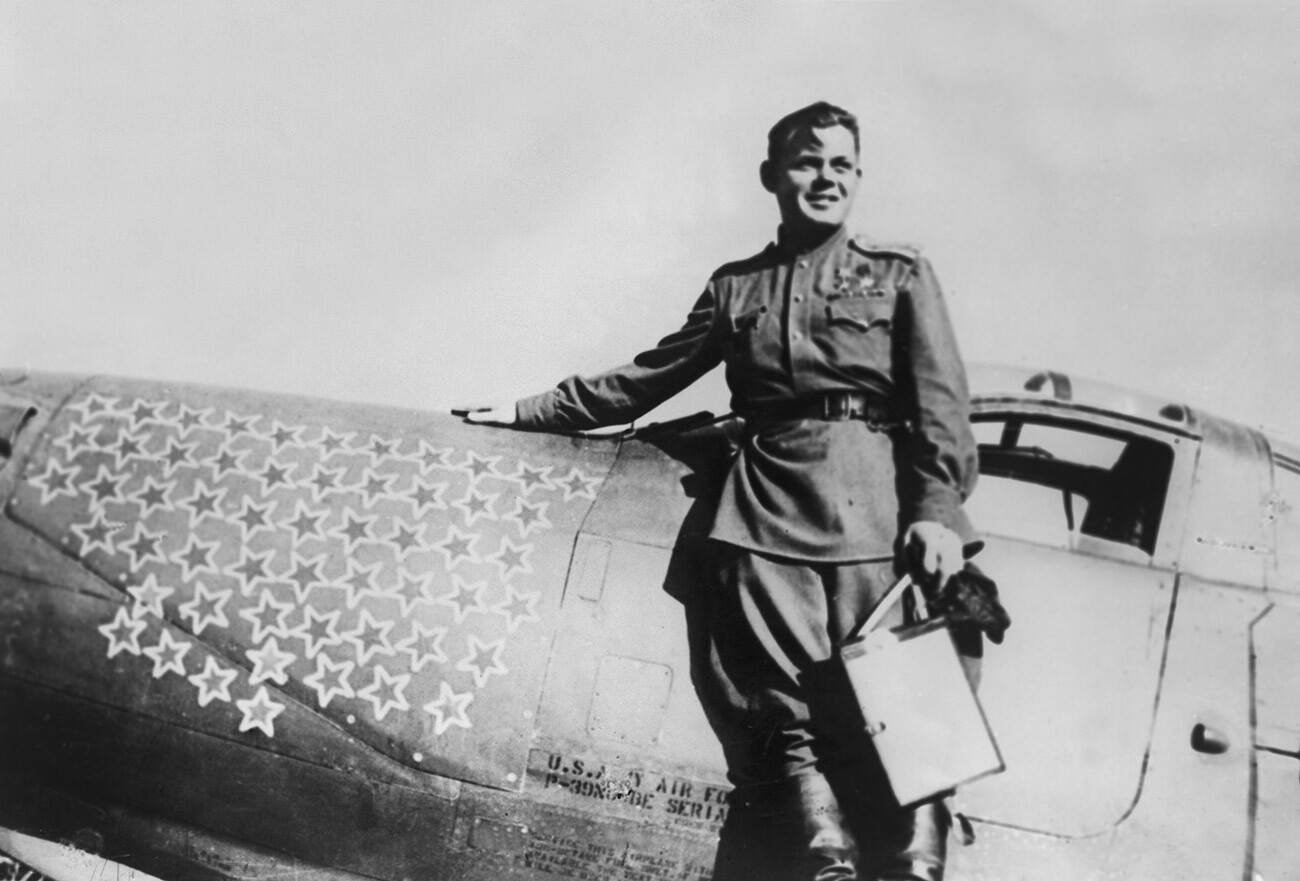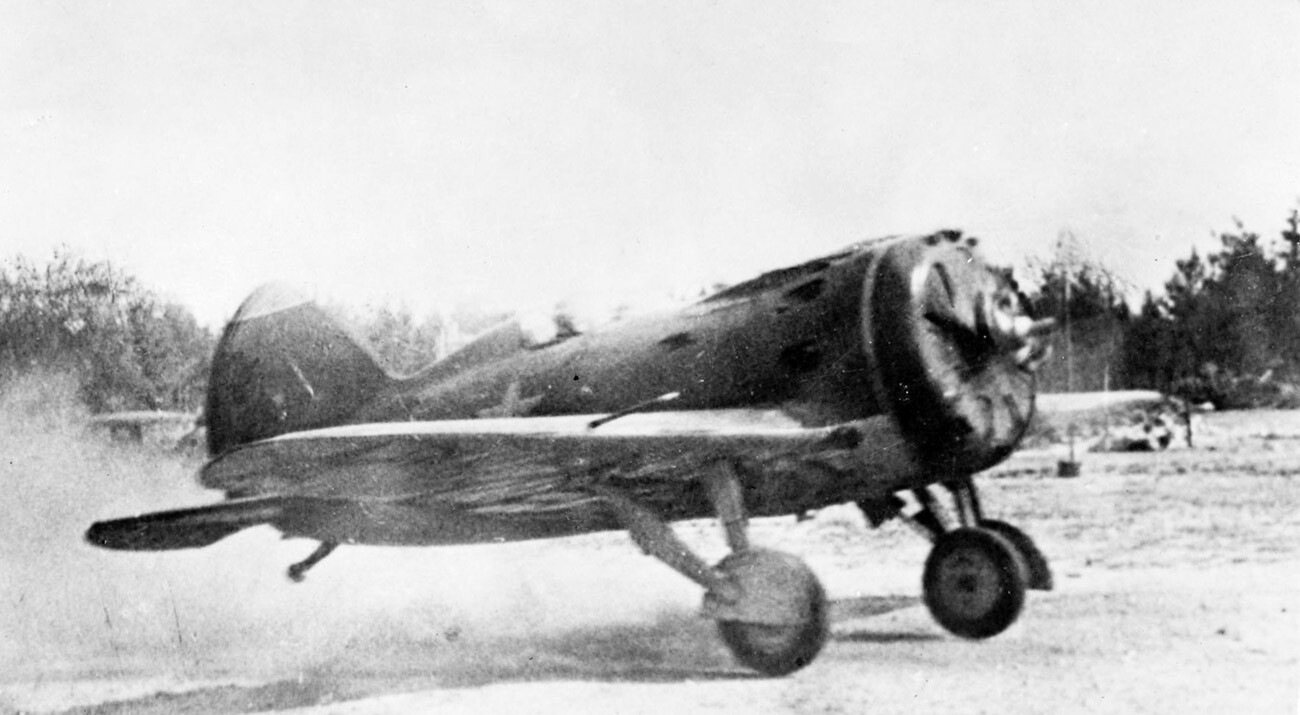Grigory Rechkalov: Soviet Ace in a U.S. ‘Airacobra’
"Brave and resourceful in battle. Enjoys authority among the squadron personnel. Disciplined, ideologically consistent, morally stable," is how the command described fighter pilot Grigory Andreevich Rechkalov in 1942.
During the war, Rechkalov made 452 combat sorties, participated in 122 air battles, personally shot down 61 (according to other sources - 66) enemy aircraft, including five as part of a group. He sat at the controls of many fighters, but his favorite was the U.S. ‘Airacobra’.
 Grigory Rechkalov and his 'Airacobra'.
Grigory Rechkalov and his 'Airacobra'.
However, one of the most effective aces of the anti-Hitler coalition could have been written off to the ground on the very first day of the war. That’s because Rechkalov suffered from color blindness, which he managed to hide for a long time.
On June 22, 1941, the military medical commission established the truth and rejected the pilot. However, the war began that same day and Grigory Andreevich remained in service.

Rechkalov fought in the skies of Moldova in I-153 and I-16 fighters and shot down three enemy aircraft in the first month of fighting. However, the pilot's glorious combat path was interrupted by a serious injury received on July 26 - two dozen fragments of a German shell had dug into his leg.
"I noticed that my glasses were splashed with something dark. I looked into the cockpit and did not believe it. Half of the broken right pedal lay on the floor in an oily-brown puddle. The toe of the boot, half torn apart, was a mess of pieces of skin and blood,” the Soviet ace recalled.
 Soviet I-16 fighter.
Soviet I-16 fighter.
The surgeons managed to save the leg, but Rechkalov returned to duty only in April 1942. He continued serving in the 16th Guards Fighter Aviation Regiment, where another famous pilot named Alexander Pokryshkin served with him.
Grigory Andreevich mastered the Yak-1 and MiG-3 and, later, the regiment was armed with the American P-39 ‘Airacobra’. This powerful fighter with car-type door and an engine located behind the cockpit did not forgive mistakes and easily went into a tailspin when performing complex aerobatics at low altitudes.
 Heroes of the Soviet Union and Pilots Alexander Pokryshkin (second left), Grigory Rechkalov (center) and Nikolai Gulayev (right) on Moscow's Red Square.
Heroes of the Soviet Union and Pilots Alexander Pokryshkin (second left), Grigory Rechkalov (center) and Nikolai Gulayev (right) on Moscow's Red Square.
However, in the hands of the skilled Rechkalov, the fighter with the letters “RGA” (the pilot's initials) on the tail section of the fuselage became a formidable weapon. During the air battle for Kuban, the pilot made more than a hundred combat sorties, shot down 17 enemy aircraft and destroyed dozens of enemy vehicles and artillery guns.
Rechkalov became the most successful among the Soviet pilots who fought in the P-39. He won more than forty victories in it.
 P-39 ‘Airacobra’ fighter.
P-39 ‘Airacobra’ fighter.
Grigory Andreevich holds another record. No other Soviet ace has such a variety of aircraft shot down to his credit: Heinkel He-111, Junkers Ju-88 and 87 bombers, Messerschmitt Bf-109 and Focke-Wulf Fw-190 fighters, various types of transport aircraft, fuel tankers, reconnaissance aircraft and even an Italian ‘Savoia’ flying boat.
 German bomber He 111 shot down.
German bomber He 111 shot down.
Twice ‘Hero of the Soviet Union’ Rechkalov celebrated the Victory with the rank of Guards Major as a piloting inspector for the 6th Guards Fighter Corps. After 1945, he continued to serve in the Air Force and rose to the rank of Major General.
 Major General Grigory Rechkalov, twice Hero of the Soviet Union.
Major General Grigory Rechkalov, twice Hero of the Soviet Union.

